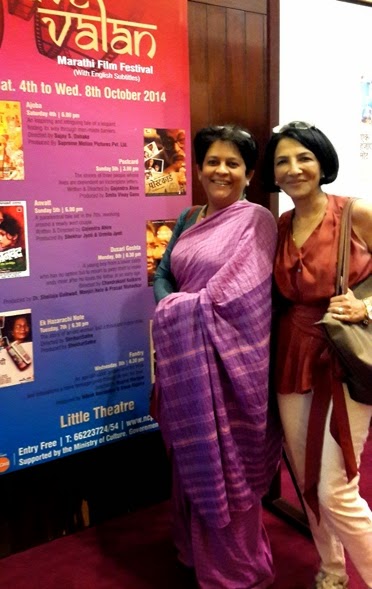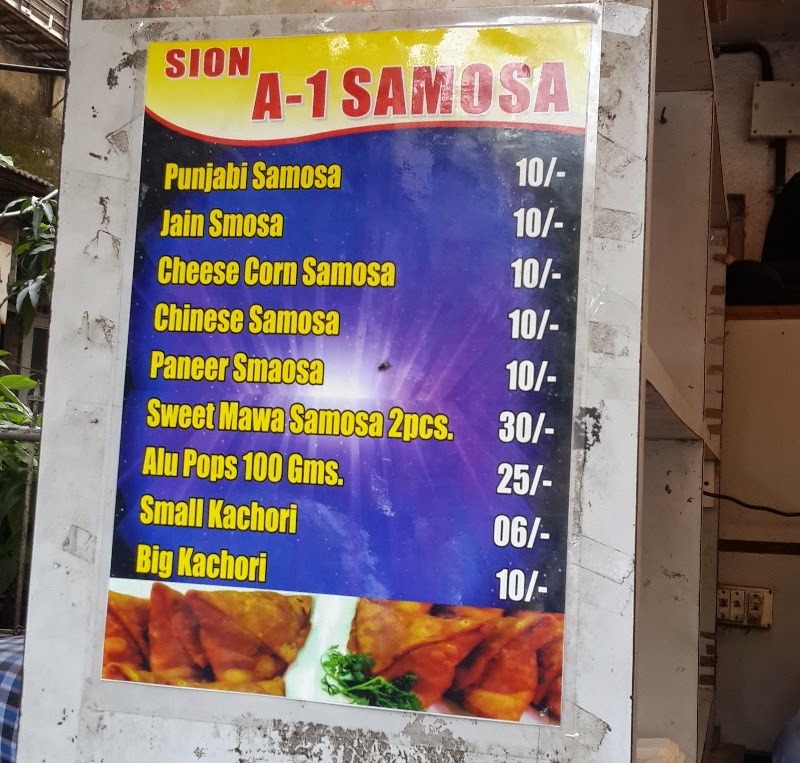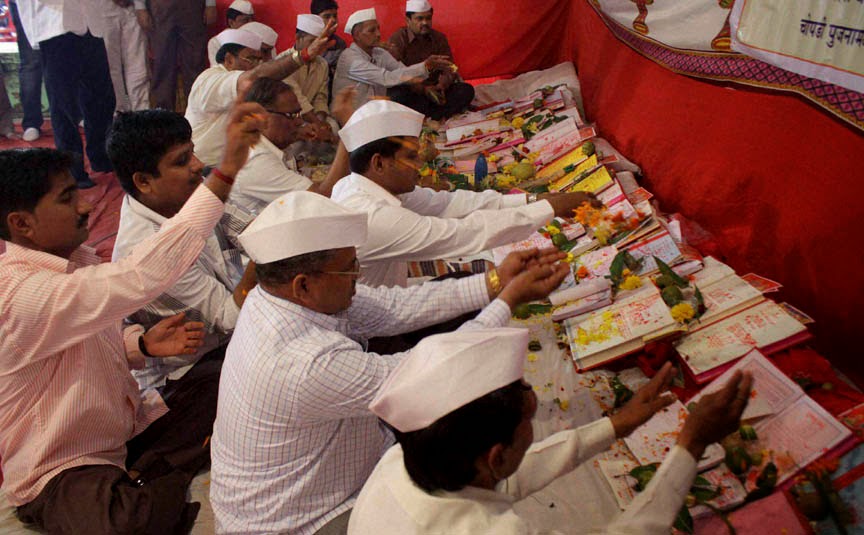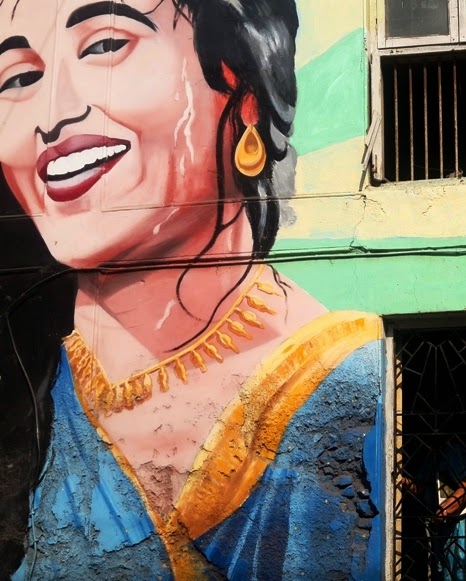- By Deepa Krishnan
The beautiful red building in this photo is of Mumbai Samachar, the oldest continuously published newspaper in India.
![]()
Mumbai Samachar was first published in 1822, in Gujarati, and is going strong even today. The building is very well maintained; the old Gujarati typeface on the signboard is intact, and it is one of the few industrial buildings from the 1800s still surviving in the Fort district.
As you can see, the Gujarati text on the signboard says "Mumbai Samachar" and the English version says "The Bombay Samachar". On the top left, it says "Bhaaratnu Sarvapratham Dainik" (India's First Daily). And on the top right is Sthapna (the year of establishment) 1822.
The art of Gujarati type-setting is more than 200 years old. Gujarati type was moulded in Bombay for the first time in 1797 at the Courier Press; by a Parsi named Behramji Jijibhai Chapgar. Apparently, this Jijibhai was quite the typesetting genius. Robert Drummond, who wrote
a book on typesets in 1808, described Jijibhai as an "ingenious artist" who without any outside help, "succeeded in completing a font of the Guzzeratty types".
Here is an excerpt from Drummond's book, showing what that 'Guzzeratty' type looked like in the early 1800's. It's not the same type that we see today. Jijibhai's original Guzzeraty type has undergone several changes in the 200+ years since it was first invented. Click on it for a larger view, it will be easier to read, and you can also enjoy all the folk wisdom in the book :)
![]() |
| Without Woman, Fire and Water, nothing is possible | |
Although the type-set was in place by 1797, it was used only for publishing advertisements. For a long time, there were no books or newspapers in Gujarati. There were approximately 200,000 people in Bombay around 1800 AD. Trade was thriving. The population included a significant number of Gujarati speaking people - Parsis, Memons, Bohras, Jains, Kutchis, and other Hindu Gujaratis. The time was ripe for a regular newspaper in Gujarati, to provide business news and trading information to these communities.
This gap was filled by Ferdoonji Murzban, a Parsi priest from Surat, who set up Mumbai Samachar in 1822. His story, like all stories of pioneers, is very interesting.
Ferdoonji was born in 1787 into a family of priests, and initially trained for priesthood. At the age of 18, he came to Bombay and learnt Persian and Arabic languages. In 1808 he opened a book-bindery, and made some money through an order from the East India Company. He decided to invest the funds in a printing press.
Ferdoonji was a friend of Behramji Jijibhai (who worked at the Courier Press), and would visit him there. Using Jijibhai's Gujarati type-set, Ferdoonji first published a Hindu panchang (astrological calendar) in Gujarati, at the grand price of Rs 2 per copy. That was in 1814, and it was a commercial success. I read that Ferdoonji's family, including the women, all worked together, helping to polish and set the type.
![]() |
Dabestan-E-Mazhab,
a comparison of South
Asian religions |
Ferdoonji was inclined towards religion and philosophy. In 1815, he brought out a copy of the
Dabestan in Gujarati. The Dabestan, originally written in Persian in the mid-1600's, is a comparitive study of religions, and includes a detailed description of Akbar's Din-E-Ilahi. That Ferdoonji chose to put his earnings into this obscure work (there couldn't have been many takers for it!) points to the strength of his liberal religious views.
In 1818, Ferdoonji published the
Khordeh Avesta, a Gujarati version of the Parsi scriptures, along with notes/commentary. It got him into huge controversies with the more orthodox elements of the Parsi community (I'm not sure whether it was the translation or his commentary that got him into hot water!).
But like they say, all publicity is good publicity :) Ferdoonji weathered the storm and in 1822, he went on to publish the Prospectus of Mumbaino Samachar, a bi-weekly newspaper in Gujarati. Like the panchang, Mumbai Samachar was a super-hit. Within weeks, it was fully subscribed. Among the 150 people who initially subscribed, there were Parsis, Hindus, Mohammedans and Christians (Europeans).
Mumbai Samachar was meant for the business community, and filled a much needed gap. It featured local appointments, ship docking schedules, and news clippings from Calcutta and Madras, which were the two other important British centres at the time. There was also news from London, and the prices of opium from Canton in China.
The paper went from strength to strength, and still continues to function today (although Ferdoonji was actually forced to leave Bombay and settle down in Goa, due to his religious views).
![]()
The street on which the newspaper is located is called Bombay Samachar Marg. It is currently owned by the Cama family, and run by Hormusji Cama. If you ever go walking in Horniman Circle, stop by and admire the building. Often you'll spot Hormusji's maroon 1959 Chevy Bel Air parked outside (he is a vintage car enthusiast).
I drove by recently and saw two uniformed men standing at the gate. I'm not sure if they work there. But I was comforted by the feeling that the doors of Mumbai Samachar were still open for business, keeping the memory of Ferdoonji Murzban and Jijibhai Chapgar alive.
![]() I also saw lots of sets. Like this one, of a courtroom, with a lawyer arguing a case. Excuse the blurry pic. But it was too melodramatic not to post
I also saw lots of sets. Like this one, of a courtroom, with a lawyer arguing a case. Excuse the blurry pic. But it was too melodramatic not to post I also saw lots of sets. Like this one, of a courtroom, with a lawyer arguing a case. Excuse the blurry pic. But it was too melodramatic not to post
I also saw lots of sets. Like this one, of a courtroom, with a lawyer arguing a case. Excuse the blurry pic. But it was too melodramatic not to post



































.jpg)

































